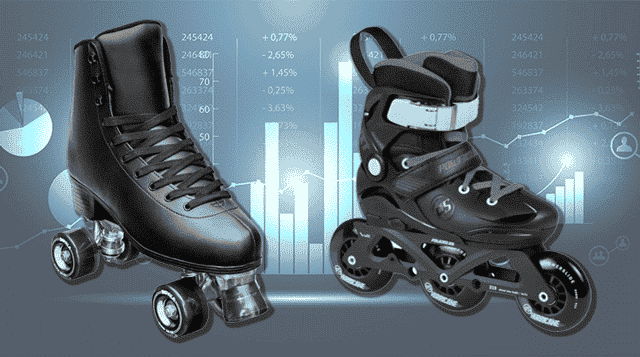Which skate frame for which use?
Each skating discipline requires special frame features. You'll need handiness and reactivity in slalom, rigidity and efficiency in speed, comfort in long distance, solidity and sliding in street, etc. Online-Skating.com prepares the ground to make your choice easier...
Par alfathor
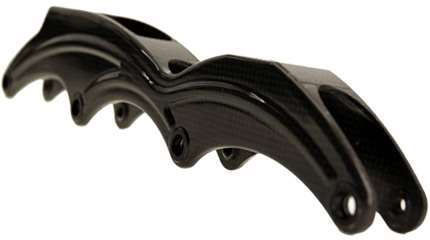
Rationalization of your frame choice
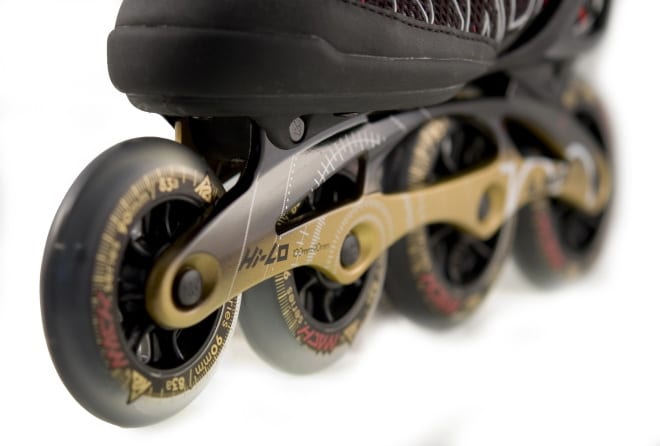 Let’s set out the outlines that will help you choose your frames more easily, rather than going into the details of the different skating disciplines. More in-depth articles for each skating discipline will be released soon. There is already one for speed skating…
Let’s set out the outlines that will help you choose your frames more easily, rather than going into the details of the different skating disciplines. More in-depth articles for each skating discipline will be released soon. There is already one for speed skating…
Let’s focus on the different factors that bring different properties to a frame:
- The manufacturing process
- The design
- The dimensions
- The interaxial spacing
- The rigidity
- The material it is made of
- The number of fixing points
- The decks and bridges
- The number of wheels
- The wheel set-up (flat, rockering, anti-rocketing, etc.)
That’s for an overview!
The manufacturing processes and frame designs
Frames can be molded, pressed, extruded or cast in one piece. Three other processes also exist for composite frames with carbon basis, they are detailed in our article written in collaboration with EOSkates on the making of composite frames.
Molded/injected frames
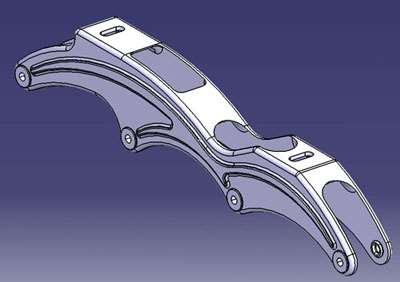 It is the most common manufacturing process for frames made of plastic, the material is injected into a mold of the shape of the frame. That process is inexpensive and it is used for entry level products in the fitness range as well as for street skating frames.
It is the most common manufacturing process for frames made of plastic, the material is injected into a mold of the shape of the frame. That process is inexpensive and it is used for entry level products in the fitness range as well as for street skating frames.
Pressed frames
Take a metal slab, most of the time it is aluminum, and press it to give it the shape you want. That process is common for mid-range fitness and long-distance skates.
At BJ Concept’s, a French manufacturer of speed frames, the process is slightly different: An aluminum foil is laser cut and folded with a press brake. Then the bearing seats are embossed and the screw heads are milled. All there is left is to polish the surface of the frame to remove the manufacturing traces and anodize it in black.
Extruded frames
That manufacturing process is quite expensive. An aluminum block is compressed in an extrusion die to get its definitive shape. That system enables to get frames cast from one piece with good mechanical properties.
Machined frames
Machining frames from billet is the most expensive process since it requires time. A block is ‘carved’ to the desired shape. This process offers one of the best solidities.
Cast in one piece or made of several parts?
There as different types of frames: Those that are cast in one piece and those that are made of several parts. No need to be a genius to understand that a frame made of several parts will be less efficient than a frame cast in one piece, in terms or rigidity and solidity.
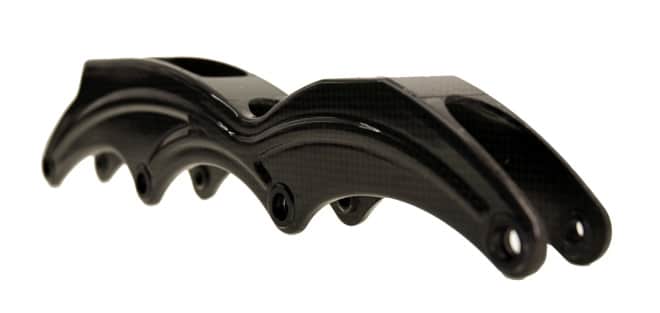
Dimensions
The chassis length
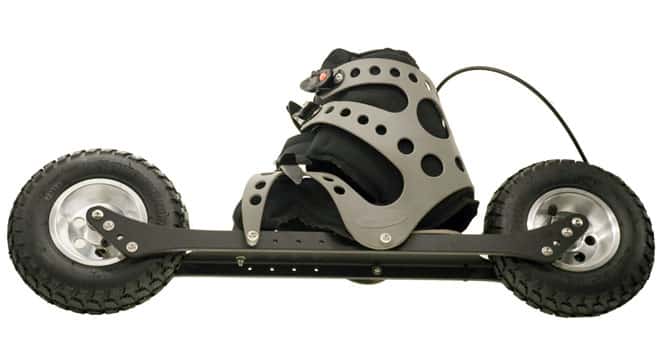 You should make your choice according to your favorite discipline. The shorter the frame, the more handy it gets: A short frame is very suitable for hockey, slalom, aggressive, freeskate or urban skating.
You should make your choice according to your favorite discipline. The shorter the frame, the more handy it gets: A short frame is very suitable for hockey, slalom, aggressive, freeskate or urban skating.
The longer the frame, the less handy. On the other hand it is more stable and transmits better the power of the push. That type of frame is rather used for long distances or speed skating. They are also used in downhill skating, where weightbearings are particularly strong, for their great stability.
Height
- The higher the frame, the higher your center of gravity. You may lose in stability.
- The lower the frame, the more stable it is.
- The higher the frame, the more stress on the ankle.
You should have toned ankles to compensate for the additional lateral stress… Or a higher cut skate boot to partially palliate the drawback.
Most of the time, skaters go for the lowest frames, whatever the discipline, in order to keep as much balance as possible. The tricky part is to find the right compromise according to your practice. For off-road or speed skating for example, you have to reconcile wheels with big diameters, that will mechanically increase the ground clearance of the frame, with a need for stability.
Number and placing of wheels
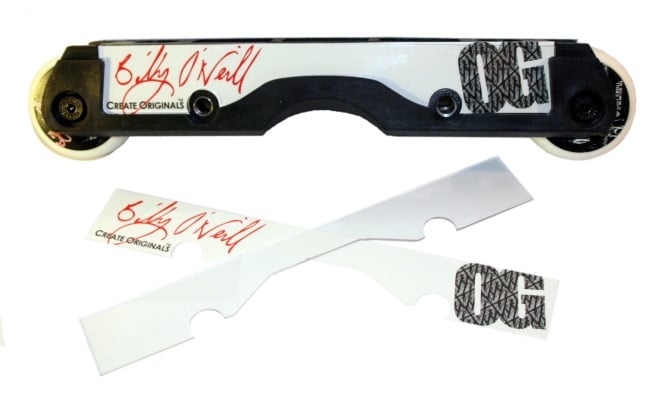
According to disciplines, frames may have from 2 to 6 wheels. How does the number of wheels influence the behavior of the skate?
2 wheels
Models equipped with two wheels are common in off-road skating. You generally have one wheel at each end of the boot, to use big diameters without raising your gravity center. That type of set-up is not easy to handle because of the length of the frames.
There are also two-wheel models in street, for freestyle. The skate is less easy to handle too, but enables to slide on large walls without blocking.
3 wheels
Models with three wheels are quite common in the kids section, for long distance, speed, even artistic skating. The overall weight of the skate is reduced. It is then easier to manage and remains pretty easy to handle thanks to the compact frame. Bigger diameters can enter the frame without weighing it down too much.
4 wheels
It has become a standard in most disciplines from speed to freeskate, through hockey and slalom. It is a good compromise that enables many set-ups: flat, rocker…
5 and 6 wheels
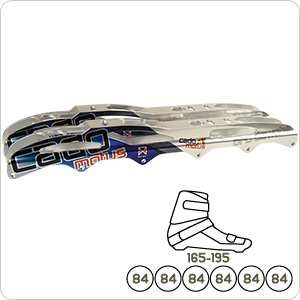 Those frames have become common for speed, since they offer stronger weight bearings and more grip without compromising the rolling too much. CadoModus has released a 6x84mm frame specifically designed for straight downhill schuss down!
Those frames have become common for speed, since they offer stronger weight bearings and more grip without compromising the rolling too much. CadoModus has released a 6x84mm frame specifically designed for straight downhill schuss down!
The number of wheels influences the grip…
The more wheels, the more contact points with the ground, the better the grip. In order to feel it, you can try taking off the two middle wheels of your classic 4-wheel frame and skate on a wet surface. You lose your bearings, your skates give way.
… The wear and tear, and the friction
In return, friction with the ground is increased. On the other hand, the more wheels, the less weight on each wheel, so that the wheels squeeze less under the weight and wear out less quickly.
Flat or rocker set-up?
There are models of frames that offer those crazy options as standard.
• A frame with a flat set-up has all the wheels touching the ground. It’s the classic set-up.
• The hi-low rocker set-up has bigger wheels at the rear and smaller wheels at the front, tilting the skater’s body position forwards for more reactivity and handling. This is a common set-up in hockey.
• The special characteristic of the full ‘banana’ rocker set-up is that the two middle wheels are bigger than the end wheels, so that you gain in handiness but lose in stability. Slalom skaters love that set-up.
Material: composite, aluminum, bamboo?
We enter a sensitive subject here. Some composite materials such as carbon can offer more rigidity than aluminum but are less resistant to breakage. When speaking about composite materials, always keep in mind that the manufacturing of the frame plays a key role. According to the quantity of the various elements in the final composition, the properties of the frame may vary.
Polymere frames
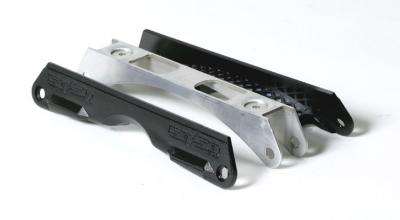 It is often PVC, polypropylene, polyurethane or nylon models. They are rather flexible and get easily distorted. Their efficiency is fairly average. On the other hand, they absorb vibrations a lot, which makes them comfortable. These materials are mostly used for entry-level fitness products and street frames.
It is often PVC, polypropylene, polyurethane or nylon models. They are rather flexible and get easily distorted. Their efficiency is fairly average. On the other hand, they absorb vibrations a lot, which makes them comfortable. These materials are mostly used for entry-level fitness products and street frames.
In aggressive skating as in long distance fitness skating, this material is sometimes mixed with glass or carbon fiber.
Composite frames
They often have a plastic base to which is added glass or carbon fiber to increase their rigidity and solidity. That manufacturing process can be used for both entry-level and high-end skates. The choice of the combined materials and their proportions will make the difference. For entry-level products, polymer is the dominant material, with sometimes a little fiberglass. For high-end products, carbon is king.
Metal frames
Aluminum is mainly used since it offers a good compromise between rigidity, flexibility and distortion tolerance, but magnesium and titanium are sometimes combined or fully used for more lightness or solidity.
They are everywhere in most disciplines in mid-range and high-end products.
What about bamboo?
Not much used yet in the industry of skating, bamboo is a light material that would be three times more resistant than steel. Some sustainable development-oriented products are equipped with bamboo frames. They are very comfortable to skate with but not very efficient.
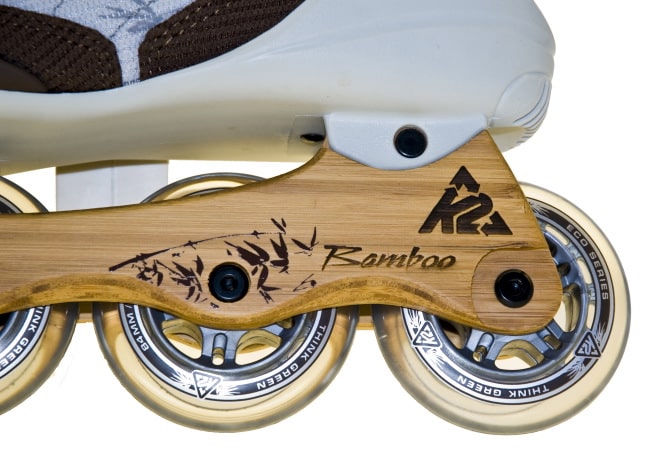
Other parameters to take into account…
Rigidity/flexibility of the frames
If skaters opt for rigid frames for more reactivity in most disciplines, make sure to find the right compromise.
With very long and rigid frames, you will feel like you skate on rails because they won’t have any flexibility at all. Turning will be harder and you had better use them on straight lines.
You can test the rigidity of a frame in squeezing its ends between your fingers. If the flexion is pronounced, the frame is easy to handle, if it doesn’t move, you have a rail in your hands. More reactive but less easy to handle.
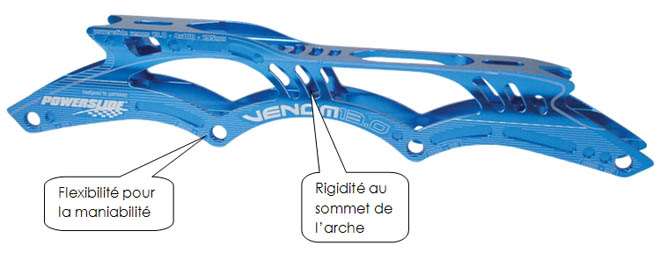
Flexibility for handiness / Rigidity on top of the bridge
2 or 3-point frames
We have dedicated a whole article on the subject, don’t hesitate to read or re-read it! In summary, you gain in reactivity, speed-up, in sensations, but you loose in comfort…
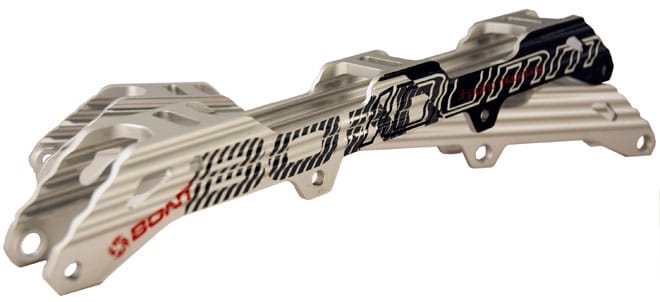
Useful links
- The manufacturing processes of skate frames
- Maintaining your skate frames
- Adjust your skate frames
- Choose your speed skating frames (by Yann Guyader, world champion)
- Choosing your aggressive skating frames
- Frames: flat and rocker set-ups
Translation: Chloe Seyres
Photos : Rollerenligne.com





